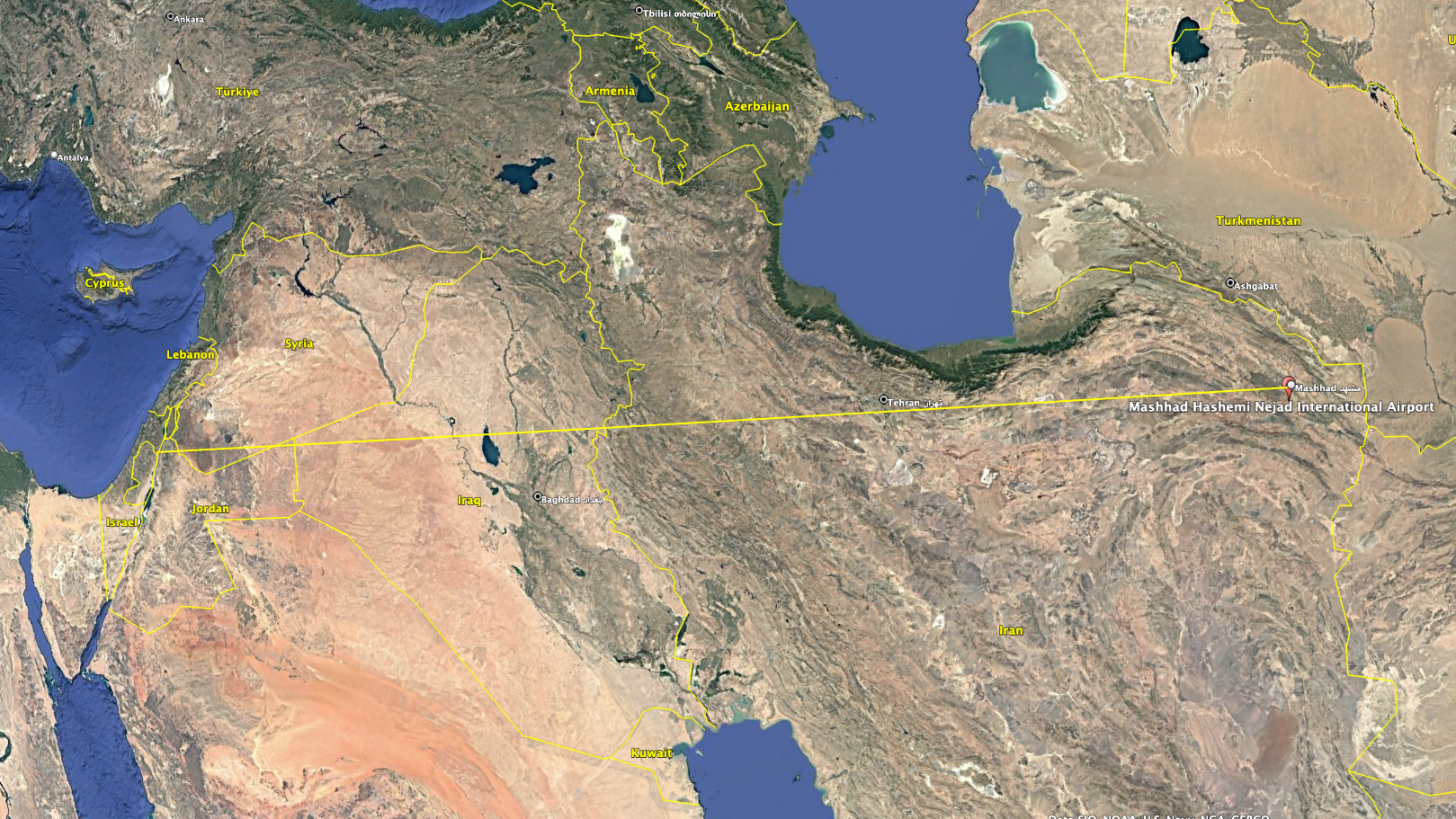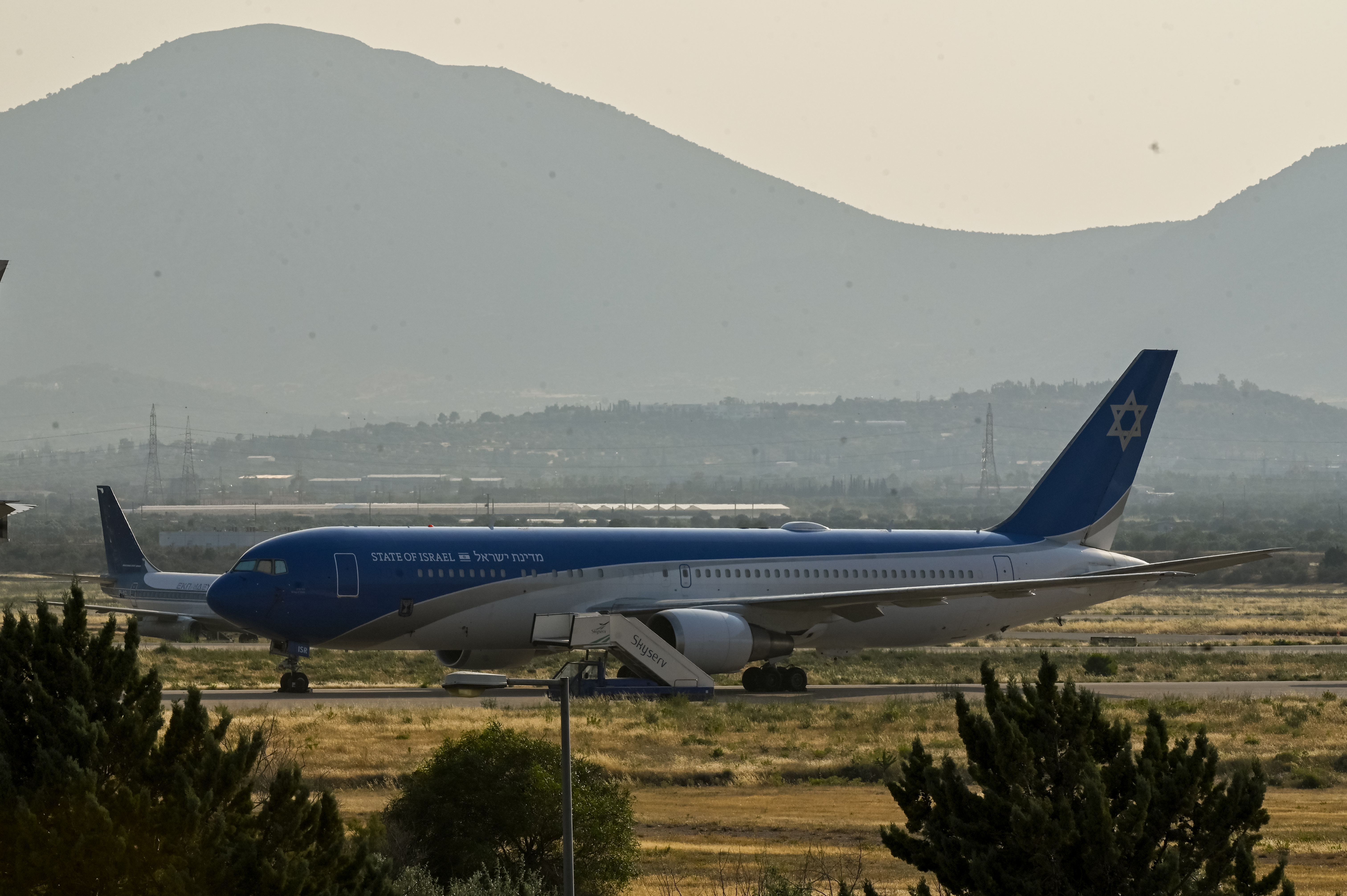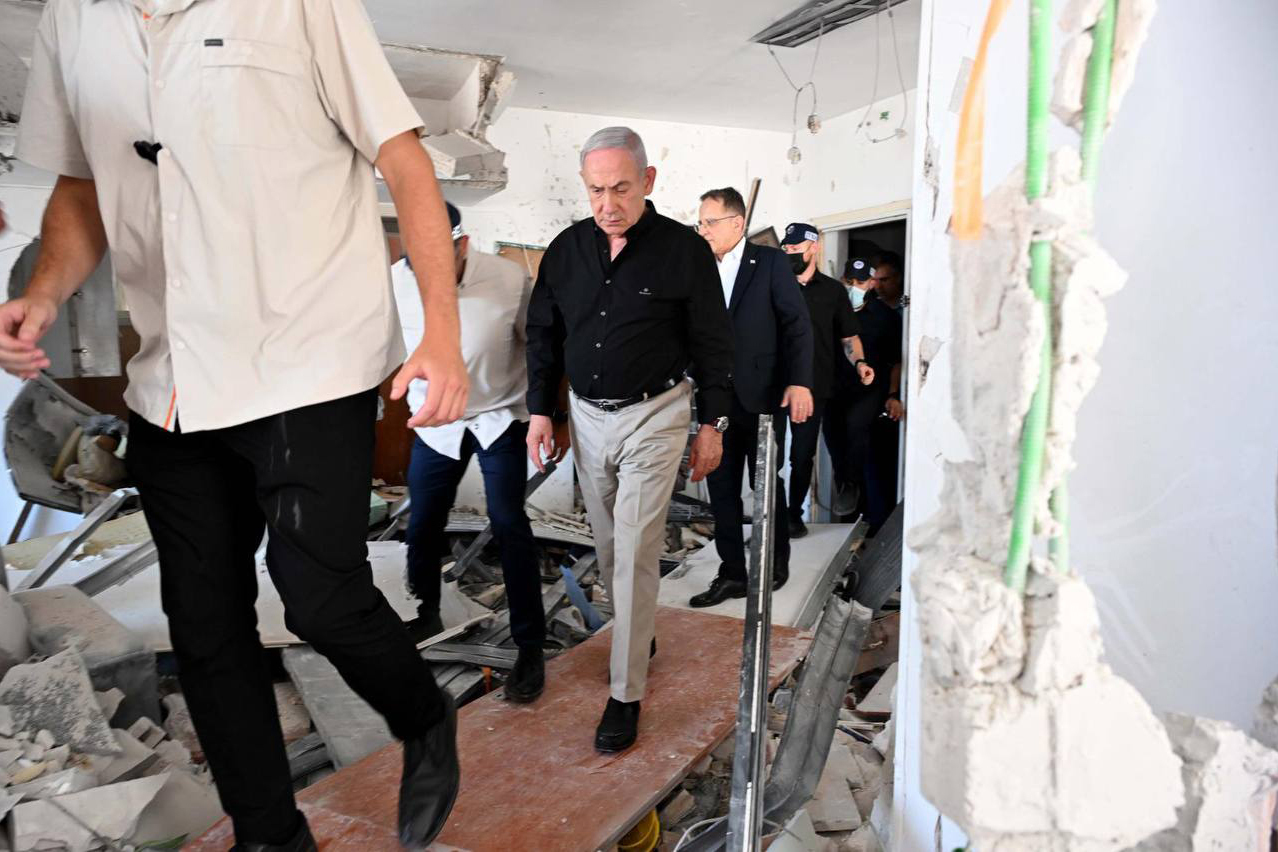Iran and Israel continue to trade blows late on Saturday and into Sunday. On the Israeli side, the strikes constitute the latest phase of Operation Rising Lion, a campaign designed to destroy Iran’s nuclear capability and long-range weapons capacity. Among these strikes, a mission that reportedly knocked out an Islamic Republic of Iran Air Force (IRIAF) aerial refueling tanker at Mashhad Airport in northeast Iran was, according to Israeli military officials, the “most distant strike since the beginning of the operation.” Indeed, it would be among the longest-distance airstrikes mounted by the IAF ever.
The tanker — either a half-century-old Boeing KC-707 or KC-747 — was struck more than 1,400 miles from Israel by the Israeli Air Force (IAF). The tanker version of the 747 is not flying anywhere else in the world, and Iran is understood to have only one flying example.

The mission was part of the plan “to achieve air superiority throughout Iran,” the IAF added. While the IRIAF appears to have made very little use of its combat aircraft so far, aerial refueling capacity is critical if it is to redeploy assets around the country for their own protection in the face of IAF attacks. While this kind of defense is unlikely at this point, these aircraft remain prized assets that are not replaceable for the IRIAF, and they are also used for transport roles. Keeping key regime figures and materials, especially those related to its nuclear program, from running would be a primary objective for the IDF. Yesterday, we saw very risky flights of Iranian transports out of Tehran just as Israel was achieving air superiority over the capital, for instance.
For its part, Tehran has continued to launch barrages of retaliatory missile and drone strikes at Israel, reportedly killing at least 10 people and injuring more than 100 overnight.
Readers can get up to speed with the developments in the conflict in the previous 24 hours here.
The latest Iranian strikes on Israel saw missiles penetrate air defenses in the north and center of the country.
The latest wave of Iranian attacks began shortly after 11:00 p.m. local time on Saturday, with air raid alerts in Jerusalem and Haifa.
A second wave of strikes followed from around 2:00 a.m. According to Israeli media, at least 35 people were missing after a strike on the city of Bat Yam, south of Tel Aviv. Emergency services there said that a missile hit an eight-story building, resulting in at least six fatalities and around 180 people injured.
Other ballistic missiles evaded air defenses to hit Rehovot, also outside of Tel Aviv, killing two. One of the main targets here appears to have been a science institute.
Another four fatalities were reported after an Iranian strike on the Palestinian majority town of Tamra, in northern Israel, which was struck on Saturday night.
The continued threat of Iranian missile and drone attacks means that Israeli airspace remained closed Sunday for a third consecutive day.
“Due to the security situation and in accordance with the instructions of security authorities, Israeli airspace is currently closed to civilian aviation — no incoming or outgoing flights are operating,” the Israeli transport and foreign ministries said in a joint statement.
As regards Ben Gurion International Airport near Tel Aviv, the busiest international airport in Israel, “a notice regarding its reopening will be given with at least six hours’ advance warning,” an Israel airports authority spokesperson said. “A decision to resume flights to Israel will only be made once it is deemed safe to do so,” the statement added.

As of yesterday, the Israel Defense Forces (IDF) was focusing on attacks on Iranian energy infrastructure, as Operation Rising Lion rolled on.
These kinds of attacks have continued with the Shahran oil depot in Tehran having been left burning by an Israeli attack. Iranian officials said the situation there was under control. This is one of two Iranian oil depots now burning, the other being in southern Tehran. At the same time, Israeli energy infrastructure has also been on Iranian target lists, including a refinery in the northern city of Haifa. Officials there said there were no injuries at the plant, but pipelines and transmission lines were damaged, forcing some facilities to shut down.
Other Israeli strikes have targeted the main building belonging to Iran’s defense ministry. The semi-official Tasnim news agency said today that only minor damage was inflicted.
Another defense ministry building was attacked in the central city of Isfahan, Iranian media said today. “One of the centers affiliated with the Ministry of Defense in Isfahan was attacked, and possible damages are under investigation,” the ISNA news agency reported, quoting the deputy provincial governor. Unconfirmed reports suggest that the facility attacked was involved in the design and development of the Shahed series of long-range one-way attack drones, notorious above all for their use by Russia in Ukraine.
Attacks on Iranian facilities related to weapons manufacture, outside of the nuclear program and long-range strategic missiles, would be in keeping with Israeli evacuation warnings to Iranians living near weapons production facilities in Tehran and elsewhere in the country.
In a statement, Israeli Minister of Defense Israel Katz said: “The Israeli military will strike these sites and will continue to peel away the Iranian snake’s skin in Tehran and everywhere, targeting nuclear capabilities and weapons systems.” An IDF evacuation warning includes all weapons factories and supporting facilities.
Reports began to emerge today of further Israeli airstrikes directed against targets in the Iranian capital, accompanied by footage showing residents fleeing the city.
More explosions were heard in central Tehran today, with footage showing columns of smoke rising from one of the explosion sites, which Tasnim reported was near the central Valiasr Square.
The Iranian nuclear program is also still being attacked by Israel.
According to the IDF, its targets have included the nuclear facility in Isfahan. While this attack was confirmed by an IDF spokesperson in a post on X on Sunday, they did not provide a timeframe for the attack.
Another objective reported to have been attacked today is the Tehran police headquarters in the center of the Iranian capital.
“The Greater Tehran Police Command was hit by one of the enemy’s drones,” the ISNA news agency reported, citing a police statement. It added that the attack caused “minor damage” and injured “a number” of police personnel.
Reflecting the apparent air superiority now enjoyed by the Israeli Air Force (IAF) over at least some parts of Iran, there is now growing evidence of the use of Joint Direct Attack Munitions (JDAM), which do not offer any significant standoff range.

Iranian authorities now say the death toll from Israeli strikes on Friday, the first day of Operation Rising Lion, stands at 78. Many more people are said to have been killed since then, including 60 when a missile brought down a 14-story apartment block in Tehran on Saturday.
Earlier strikes under Operation Rising Lion had targeted key individuals, notably those within the Islamic Revolutionary Guard Corps or working within its nuclear program.
The latest named victim of these targeted assassinations is Ali Shamkhani, described as Iran’s chief adviser to its supreme leader, Ayatollah Khamenei. Shamkhani died in the hospital yesterday, according to Iranian media reports. Shamkhani had previously served as Iran’s top national security official for a decade.
The initial phase of the Israeli offensive on Friday also killed at least 30 military personnel in East Azerbaijan province, according to the ISNA news agency. “Following the Zionist regime’s aggression against this province since Friday morning, 30 military personnel and one Red Crescent member have been martyred in defence of the Islamic homeland, and 55 people have been injured,” ISNA reported, quoting East Azerbaijan provincial authorities.
New satellite imagery is also emerging, showcasing damage sustained to Iranian air bases during earlier phases of the campaign. Noje Air Base, seen in the embedded tweet below, in Hamadan province, was home to Islamic Republic of Iran Air Force (IRIAF) F-4E and RF-4E tactical jets and had once been earmarked as a likely future base for Iranian Su-35s. It was struck on Friday and apparently heavily damaged. Hardened aircraft shelters also appear to have taken direct hits.
Another airfield targeted by the IAF is Shahid Fakouri Air Base in Tabriz, which was home to F-5E/F and Saeghe fighters as well as MiG-29 Fulcrums.
On the other hand, there are growing signs that Israel will face a long and difficult struggle if it is to put Iranian nuclear facilities out of action. Jeffrey Lewis, an expert in nuclear nonproliferation and a professor at the James Martin Center for Nonproliferation Studies at the Middlebury Institute of International Studies at Monterey, notes that there is no evidence so far of attacks on the Fordow uranium enrichment plant. This may suggest that, without a plan for follow-up strikes, Israel might be reliant upon U.S. military support to fully roll back the Iranian nuclear program. Fordow, in particular, is a very tricky target, buried deep within a mountain, which would challenge even the most powerful bunker-busting weapons available to the U.S. military. Outside of unconventional weapons, putting Fordow out of action would require a hazardous special operations mission or U.S. assistance to destroy it from the air.
In the meantime, Israeli officials are warning Iran that its campaign of airstrikes will continue.
In a statement today, the IDF added that “at this hour, we are striking Iran,” and that “Iranian attacks are not behind us.”
Israeli Prime Minister Benjamin Netanyahu said yesterday that Israel’s strikes so far have set Iran’s nuclear program back, possibly by years, and that heavier blows were yet to come. “We will hit every site and every target of the Ayatollahs’ regime, and what they have felt so far is nothing compared with what they will be handed in the coming days,” Netanyahu said in a video message.
After Israeli civilians were confirmed as being killed in overnight strikes, Netanyahu said today that Iran will pay a “heavy price.”
The Israeli leader visited the site of the missile strike on a residential building in Bat Yam, where he said that Iran posed an “existential threat” to Israel and accused Tehran of “the premeditated murder of civilians, women and children.”

An unnamed Israeli military official today told Reuters that Israel is still working through a long list of targets it plans to hit in Iran. The same official said that the IDF had attacked around 80 targets in Tehran alone on Saturday evening. The targets included two “dual-use” Iranian fuel sites that supported military and nuclear operations, he said. He said they also targeted the chief of staff of Yemen’s Iran-backed Houthi militant group overnight.
For its part, Iran remains steadfast in its promise to avenge the Israeli attacks.
President Masoud Pezeshkian threatened a “more decisive and severe” response should Israel continue its “hostile actions” towards Tehran, according to the Islamic Republic News Agency, the official Iranian news agency.
While we reported yesterday on how U.S. military assets have been used to help defend Israel during Iran’s retaliatory missile and drone barrage, the United Kingdom is also gearing up for possible involvement, should any of its facilities in the region come under Iranian attack. It also could provide direct military support to Israel, too, a senior government official confirmed.
Speaking to Sky News, U.K. Chancellor Rachel Reeves called for a de-escalation in the conflict. But when asked if Britain would come to Israel’s aid if asked, Reeves said: “We have, in the past, supported Israel when there have been missiles coming in. We’re sending in assets to both protect ourselves and also potentially to support our allies.”
The U.K. government confirmed yesterday that more Royal Air Force aircraft were being sent to the region, something that Reeves said today was a “precautionary move.”
The aircraft in question comprise Typhoon multirole fighters and Voyager aerial refueling tankers.

“It does not mean that we are at war,” Reeves added. “And we have not been involved in these strikes or this conflict, but we do have important assets in the region, and it is right that we send jets to protect them, and that’s what we’ve done.”
There has been an intriguing follow-up to earlier reports of Israeli commandos launching drones and missiles from deep within Iran to attack targets in the first wave of strikes on Friday, something you can read about here.
Iran now says it has arrested two individuals who it claims are members of Israel’s intelligence agency, Mossad. Allegedly, the individuals were captured in Alborz province while they were preparing explosives and electronic devices. Reuters reports the incident, citing the semi-official Tasnim news agency. The Israeli operation also reportedly relied upon parts for quadcopter drones that were smuggled into Iran months in advance. These drones were hidden in “suitcases, trucks, and shipping containers” before being rigged with explosives and then deployed.
Meanwhile, U.S. President Donald Trump has threatened to attack Iran “at levels never seen before” if it attacks U.S. interests in the region.
Soon after his unprecedented military parade in Washington, DC, Trump posted on his Truth Social platform, also claiming that the United States had nothing to do with Israel’s latest attack on Iran. He wrote: “The U.S. had nothing to do with the attack on Iran tonight. If we are attacked in any way, shape, or form by Iran, the full strength and might of the U.S. Armed Forces will come down on you at levels never seen before. However, we can easily get a deal done between Iran and Israel, and end this bloody conflict!!!”
All in all, the expanding target set for the Israeli military points to just how big a challenge this campaign will be. As well as nuclear facilities (many of which are extremely hardened), the IDF has been targeting key Iranian individuals, missile sites, the air defense network, air bases, energy infrastructure, and more. There are signs that regime targets are now part of the growing target list.
Israel also needs to deal with all the known industrial infrastructure related to long-range weapons and nuclear programs if it is to truly remove the Iranian nuclear threat. All of this points to a very long process, especially without U.S. support. Above all, Israel is constrained by the long distances involved in its airstrikes, and the fact that it cannot put high densities of aircraft over these target areas. Were the United States to become involved, providing aerial refueling, which is a notable weak spot in the IAF order of battle, would likely be a priority.
This is a developing story, and we will continue to update it as more information becomes available.
Update, 4:30 PM, Eastern
Spectacular imagery continues to emerge, showing Israeli air defenses dealing with incoming Iranian ballistic missiles. The Israeli Arrow series of anti-ballistic missiles uses kinetic kill vehicles to engage ballistic missile threats outside of the Earth’s atmosphere (exo-atmospheric). These physically slam into the target, destroying it in its mid-course flight phase, resulting in very dramatic visual effects.
Iranian state media today officially confirmed the deaths of the Islamic Revolutionary Guard Corps’ (IRGC) intelligence chief, Brig. Gen. Mohammad Kazemi and his deputy Hassan Mohaqiq. The individuals were eliminated today in an Israeli strike in Tehran, which also claimed the life of a third IRGC intelligence officer, Mohsen Bagheri, according to state media.
Update, 5:15 PM, Eastern
Israel is now claiming that its efforts to attack Iranian nuclear facilities resulted in significant damage to the Isfahan nuclear site in central Iran. Isfahan, which is Iran’s largest nuclear research complex, was hit earlier in the campaign, but it has not been easy to assess the extent of damage here, amid conflicting claims over the attack’s impact.
In a briefing yesterday, an IDF official said Israel had “concrete intelligence” that Iran was “moving forward to a nuclear bomb” at the Isfahan facility. So far, satellite imagery of the site provides evidence of clear damage to three structures at the complex. However, the nature of the material impact remains generally unclear.
As of Sunday evening, Israel was reporting that Iranian missile strikes were continuing.
“Homefront Command Search and Rescue teams have been dispatched to several hit sites in Israel, following the latest barrage from Iran,” the IDF said in a statement. Just before this, the Israeli military had issued a warning telling the public they could leave protected shelters.
Contact the author: thomas@thewarzone.com
